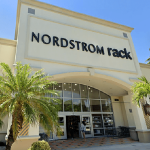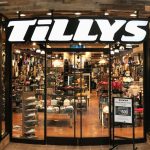Even as online shopping continues to grow, more U.S. shoppers are planning to make purchases from physical stores, according to the results of the latest study of “seamless retailing” by Accenture.
In a survey of 750 adult consumers, 21 percent of U.S. shoppers said they plan to increase their in-store purchasing, up from just nine percent of shoppers in the previous year. Asked to name what retailers need to improve the most in the overall shopping experience, 40 percent of respondents ranked improving the in-store shopping experience first, compared to just 16 percent who said the same of online shopping.
“The survey results indicate that retailers have an opportunity to increase in-store sales but only if they make the experience worthwhile for consumers,” said Chris Donnelly, global managing director of Accenture’s Retail practice.
“Consumers are looking for the conveniences of shopping online, such as information on product availability, to be available in-store. The lines between the different shopping channels are blurring, but the good news for traditional retailers is that the store continues to play an important role. In order to ensure that they offer shoppers a seamless retail experience, bricks and mortar/high street retailers must work hard to differentiate the shopping experience they offer compared to the online pure-plays.”
Accenture’s study identified a number of key trends:
Bringing the Online Experience into the Store
More shoppers are looking to take advantage of seamless retail services involving the store: In the most recent survey, 19 percent of shoppers said they are using “click and collect” services (reserving or buying an item online and then traveling to a store to collect it) more often than in the previous year, compared to 12 percent who said the same in the 2012 survey. Additionally, more shoppers (14 percent compared to seven percent) are buying in-store and having the product shipped to their home.
More shoppers are looking to take advantage of seamless retail services involving the store: In the most recent survey, 19 percent of shoppers said they are using “click and collect” services (reserving or buying an item online and then traveling to a store to collect it) more often than in the previous year, compared to 12 percent who said the same in the 2012 survey. Additionally, more shoppers (14 percent compared to seven percent) are buying in-store and having the product shipped to their home.
The ability to check product availability online before traveling to a store is the service that would most improve the shopping experience for 31 percent of U.S. shoppers surveyed. And, the vast majority of respondents (89 percent) said they would either travel to a store to make a purchase or buy online if retailers offered real-time information on product availability.
Showrooming vs Webrooming
Shoppers are “webrooming” more than “showrooming” across all product categories, except grocery. Accenture’s study found that 78 percent of U.S. shoppers had webroomed (browsing online and then going to a store to make their purchase) in the 12 months before the latest survey, while 72 percent had showroomed (going into a physical store to see a product and then searching online for a better price and making their purchase online). The proportion of shoppers who engaged in webrooming for making consumer electronics and home improvement purchases increased significantly from 2012 from 39 percent to 48 percent, and 25 percent to 35 percent, respectively.
Shoppers are “webrooming” more than “showrooming” across all product categories, except grocery. Accenture’s study found that 78 percent of U.S. shoppers had webroomed (browsing online and then going to a store to make their purchase) in the 12 months before the latest survey, while 72 percent had showroomed (going into a physical store to see a product and then searching online for a better price and making their purchase online). The proportion of shoppers who engaged in webrooming for making consumer electronics and home improvement purchases increased significantly from 2012 from 39 percent to 48 percent, and 25 percent to 35 percent, respectively.
Product Delivery: Free Beats Speed
Regardless of whether they are buying from an online pure-play or a multi-channel retailer, Accenture’s study found that more than half 57 percent of respondents said that waiting for free delivery was the most important delivery option, compared to 23 percent who preferred to pay a reasonable charge for next-day delivery. Of those shoppers looking for next-day delivery only 38 percent said they were willing to pay more than $10 for that convenience, and 14 percent said they believe the service should be free.
Regardless of whether they are buying from an online pure-play or a multi-channel retailer, Accenture’s study found that more than half 57 percent of respondents said that waiting for free delivery was the most important delivery option, compared to 23 percent who preferred to pay a reasonable charge for next-day delivery. Of those shoppers looking for next-day delivery only 38 percent said they were willing to pay more than $10 for that convenience, and 14 percent said they believe the service should be free.
However, more shoppers expect the length of time they have to wait for free delivery to be reduced. In Accenture’s 2012 study, just 25 percent of respondents said they expected a free-delivery purchase to arrive within one to five days. In the latest survey, that number jumped to 44 percent.
“Services from the online pure-play retailers that offer faster delivery in return for an annual subscription, are having a profound impact on shoppers’ expectations,” Donnelly said. “Free delivery remains a crucial factor for a significant number of shoppers but they are not always willing to wait as long to get it.”
Retailers Still Need More Seamless Operations
The Accenture study found that a growing number of shoppers expect a retailer’s product offerings to be the same across different shopping channels 51 percent in 2013 compared to 43 percent in 2012. More than half (57 percent) also expect promotions to be the same across channels and 69 percent expect prices to be the same.
The Accenture study found that a growing number of shoppers expect a retailer’s product offerings to be the same across different shopping channels 51 percent in 2013 compared to 43 percent in 2012. More than half (57 percent) also expect promotions to be the same across channels and 69 percent expect prices to be the same.
However, the survey results indicate that many retailers are not providing a seamless customer experience in some key areas. When asked about the seamless experience at their favorite retailers, only 31 percent of shoppers said that their customer accounts were completely connected across in-store and online channels, and just 32 percent said that they were able to earn and use loyalty points across multiple channels. In addition, the proportion of shoppers who believe they will secure a better price online rose from 21 percent to 31 percent.
“Delivering a seamless experience across all retail touch points remains both a key challenge and prime opportunity for retailers today,” said Donnelly. “Those retailers able to integrate the physical store with the rest of their digital capabilities, and who also use analytics to support new models of customer engagement and personalized service, can gain a true competitive advantage.”
Importance of Convenience from Online and Mobile Shopping Falls
Although convenience is still the biggest driver for shopping online or with a mobile phone, respondents ranked this as less important in the latest survey, compared to 2012 falling to 54 percent from 62 percent in the previous year. And more shoppers (43 percent) find purchasing with their mobile phones easy, compared to 23 percent in 2012.
Although convenience is still the biggest driver for shopping online or with a mobile phone, respondents ranked this as less important in the latest survey, compared to 2012 falling to 54 percent from 62 percent in the previous year. And more shoppers (43 percent) find purchasing with their mobile phones easy, compared to 23 percent in 2012.
Methodology
Accenture conducted an online survey of 750 U.S. consumers to understand consumer preferences to shop seamlessly across channels and the ability of retailers to deliver that seamless experience. For an insight into the key global trends please visit Accenture Seamless Retail Survey.
Accenture conducted an online survey of 750 U.S. consumers to understand consumer preferences to shop seamlessly across channels and the ability of retailers to deliver that seamless experience. For an insight into the key global trends please visit Accenture Seamless Retail Survey.















